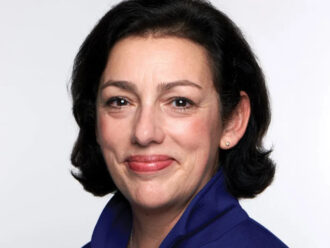Despite renewed political turmoil in Italy recently, financial markets remain surprisingly resilient to “bad” news and equities have moved to multi-year highs. Volatility is higher and relative performances of asset classes, regions and sectors have become a bit more dispersed, but there seems to be supportive undercurrent for risky assets that prevents daily volatility to transform into sustained downward trends.
Relatively cautious positioning by retail and the slower moving institutional investors, after a five-year rolling crisis environment, is probably providing the ammunition for this market behaviour as it created a safe, but little return cash pile that will grow hungry of capital appreciation as crisis sentiments start to fade. Before investors become willing to pull the trigger and start allocating cash towards risky assets, however, the prospect of higher returns on capital has to brighten. Recently this seems to have begun on the back of the most broad-based global recovery since 2009.
Next to this, effective policy action by central banks has reduced the risk of new systemic crises in the future and helped to increase investor visibility on stronger investment returns in the future. Interestingly enough the latest Italian election result also underscores how important a stronger global economy is for political risks as voter support for the government was once again shown to be positively correlated with economic conditions.
A weak economy (as in Italy) leads to discontent with the sitting government, whoever that happens to be, and economic strength creates support for a government that is seen to be responsible for that and, thereby, creates voter desire for stability rather than an urge to change leadership. Therefore, if the global business cycle continues to rise, political risks will gradually becoming smaller.
Another fascinating aspect of the current upturn is that it seems to be led by countries that were all seen as dead and buried at some point during the last decade. Germany was called the “sick man of Europe” in the first years after the introduction of the euro as it was seen to have entered on an uncompetitive exchange rate and looked unable to tackle its persistently high level of unemployment.
The US was seen to have been built on a broken growth model of excessive credit creation after the collapse of Lehman and the recent rejuvenation of the Japanese economy follows on two decades of stagnation on the back of the collapse of their own real estate and equity bubble. Finally, even the notoriously uncompetitive European periphery has started to bottom out recently. It is early days on the latter and happening at very low levels, but business surveys in Spain, Portugal and even Greece have now risen for three consecutive months.
Meanwhile, traditional growth leaders like emerging markets, especially China, and traditional sources of economic stability like the new European states of stagnation – Italy, France, the UK and the Netherlands – are following with a lag to the reanimated economies and don’t seem to be accelerating (yet).
Therefore, to monitor the direction of the global cycle at this stage it is best to closely track what is happening to the return of the living dead, being Germany, the US, Japan and the European peripherals. This part of the world will provide guidance to both the direction of growth, the probability of political turmoil and the willingness of investors to look for risk rather than safety.
Valentijn van Nieuwenhuijzen is head of strategy, ING IM




Comments